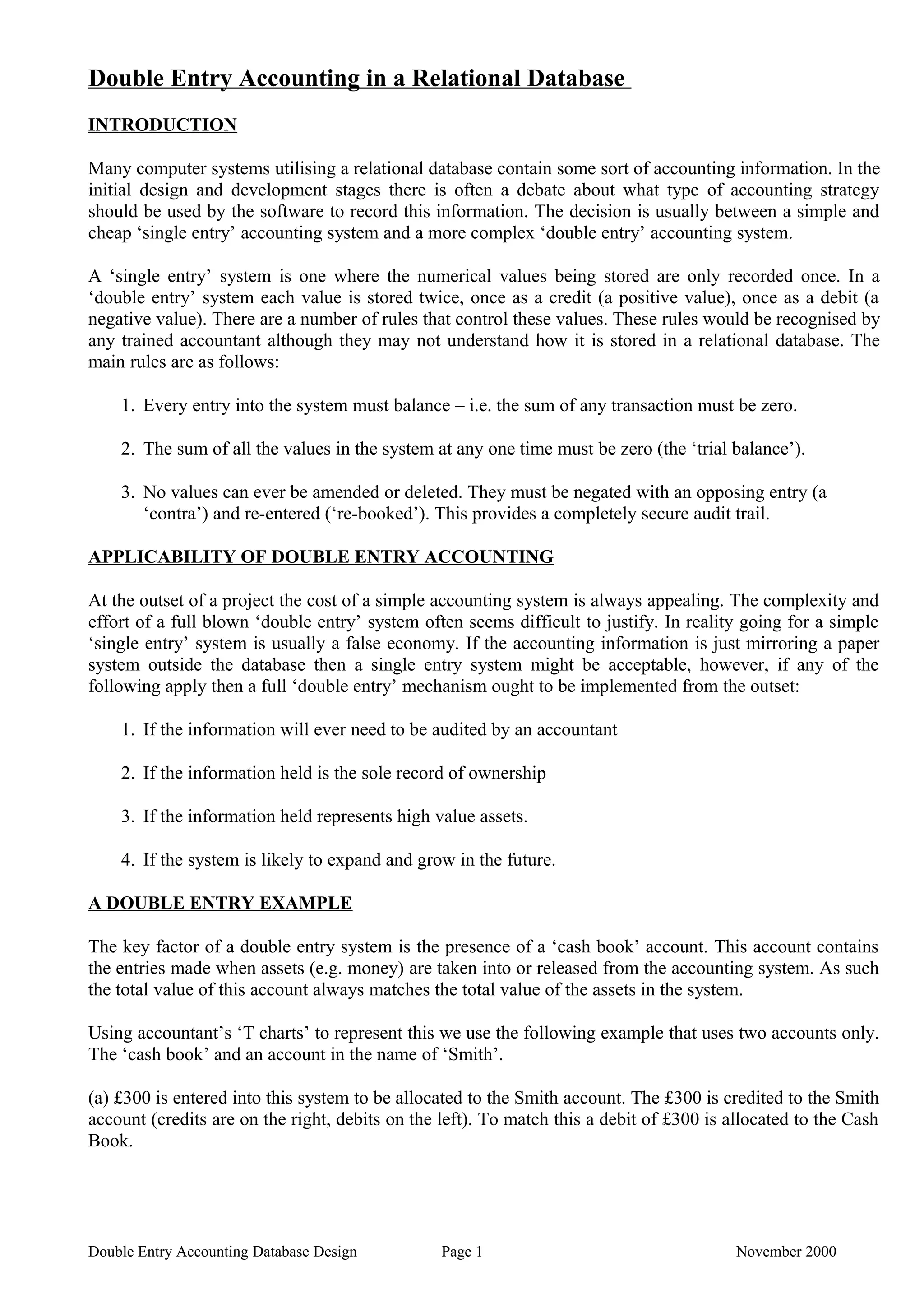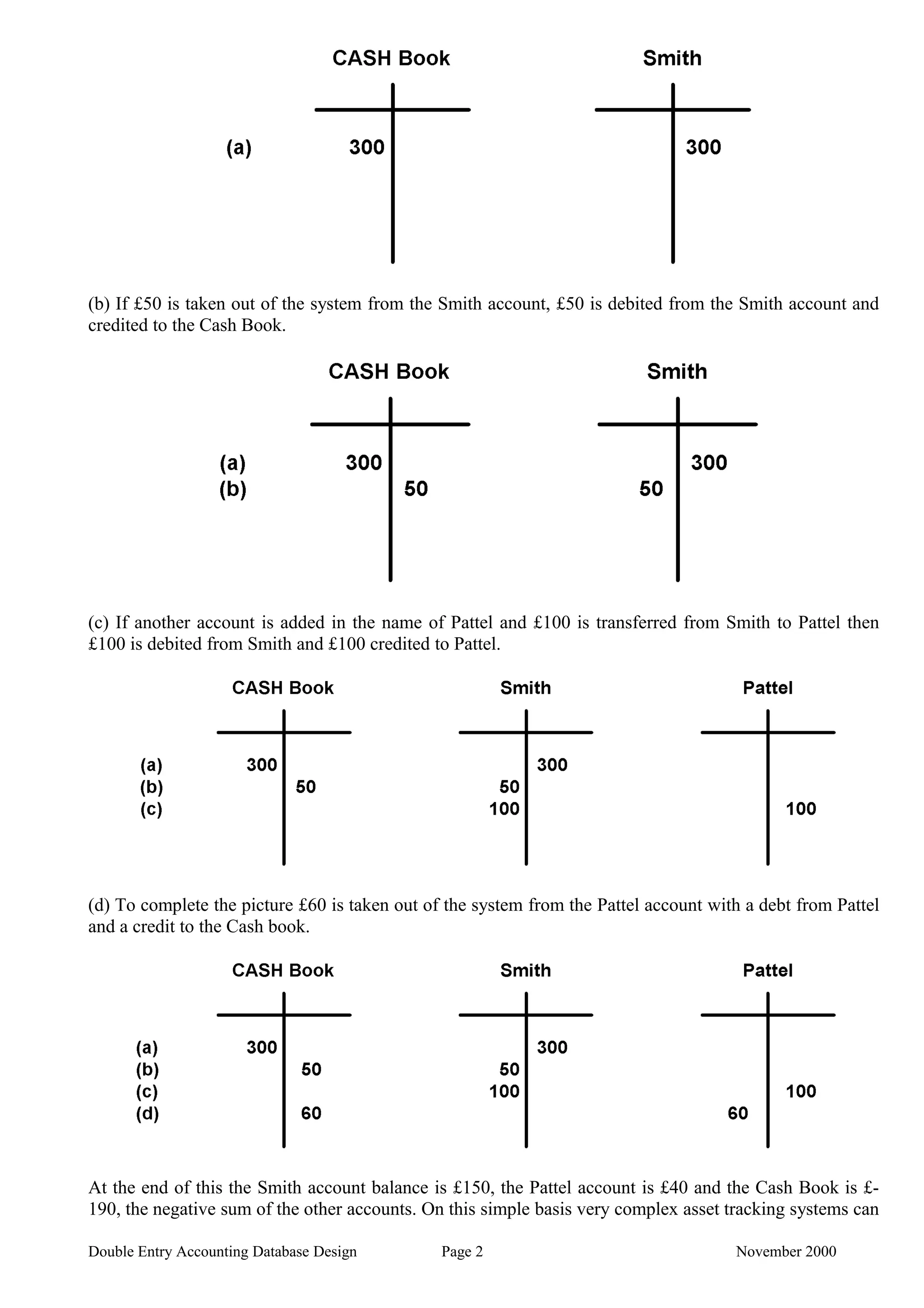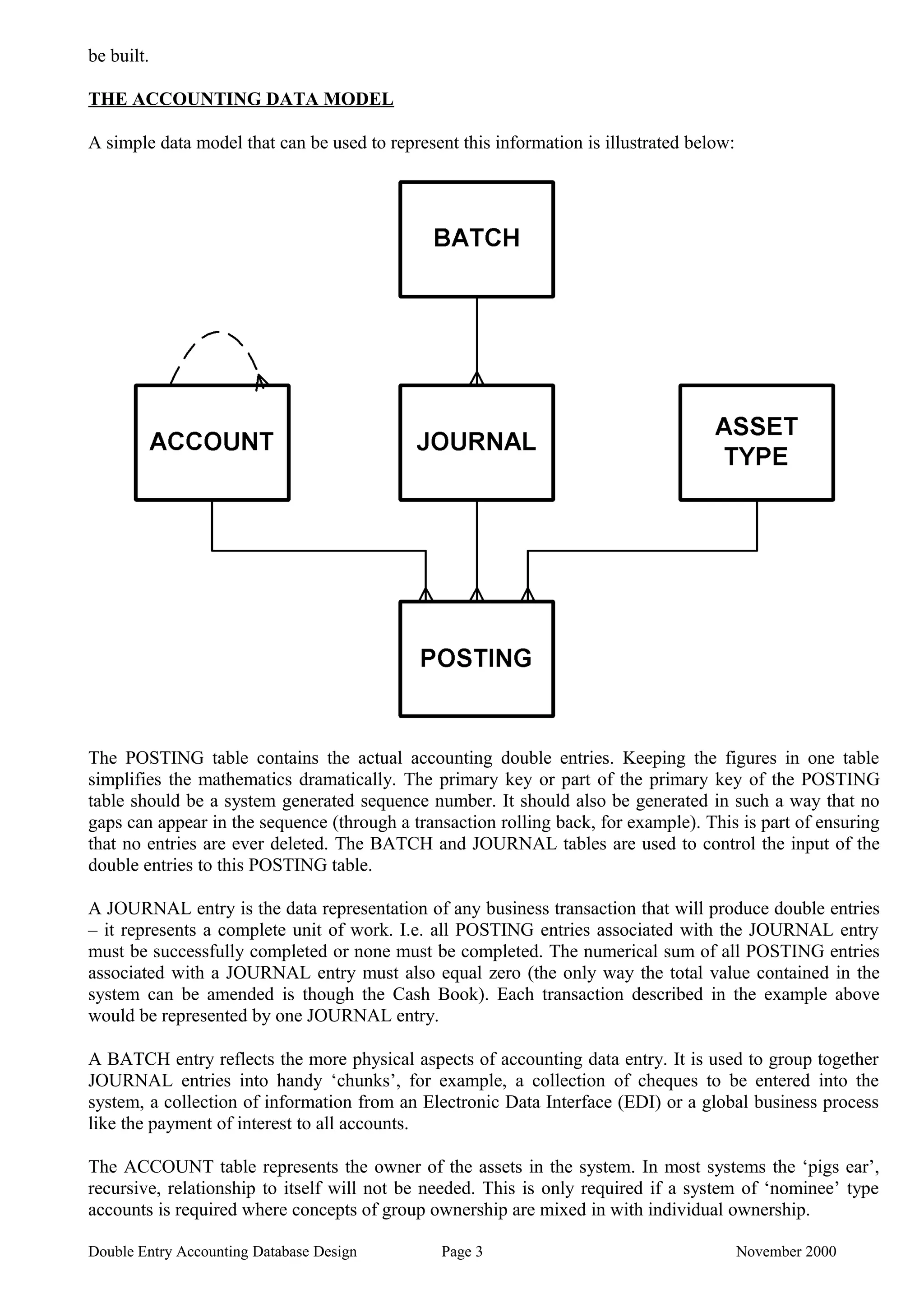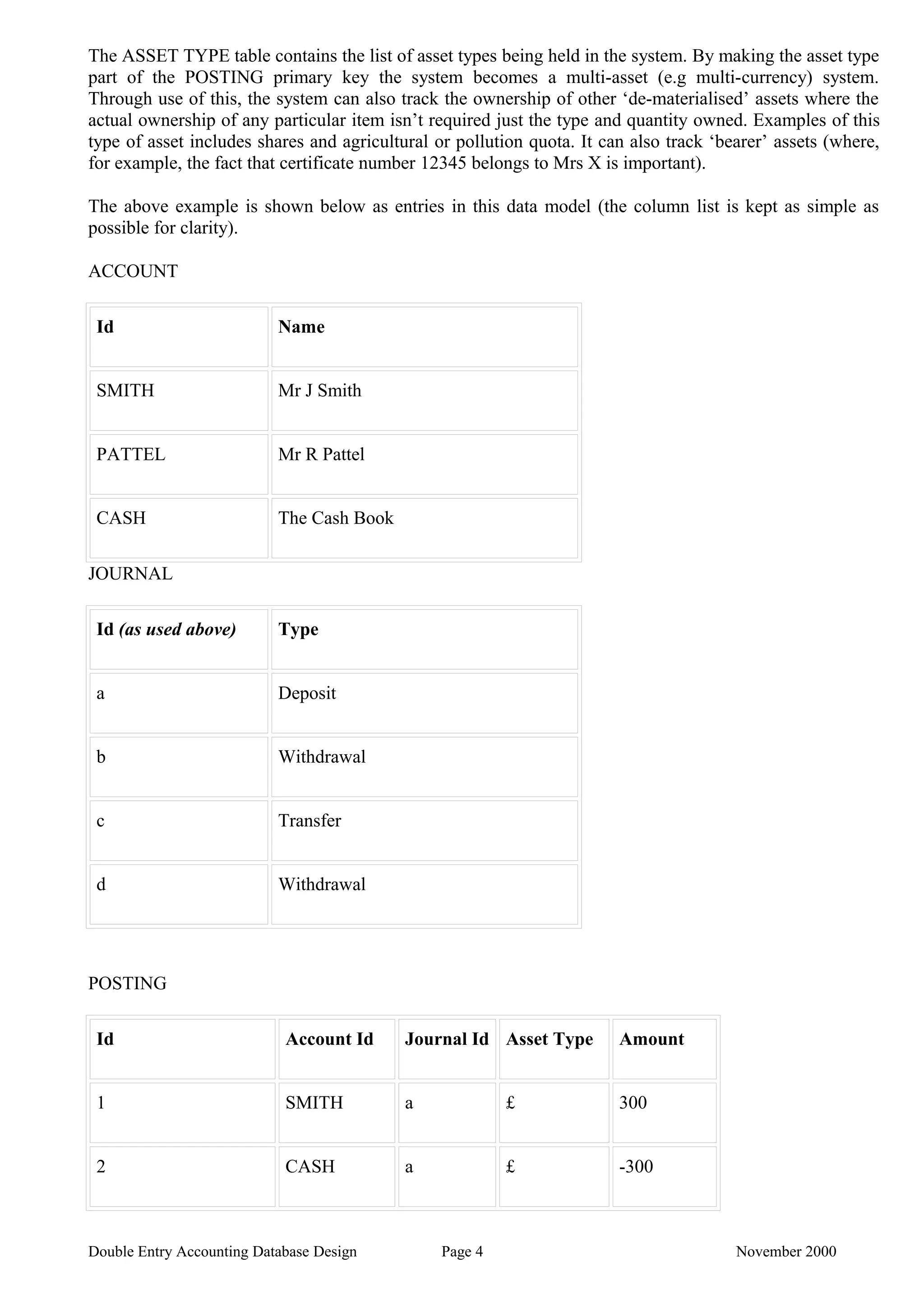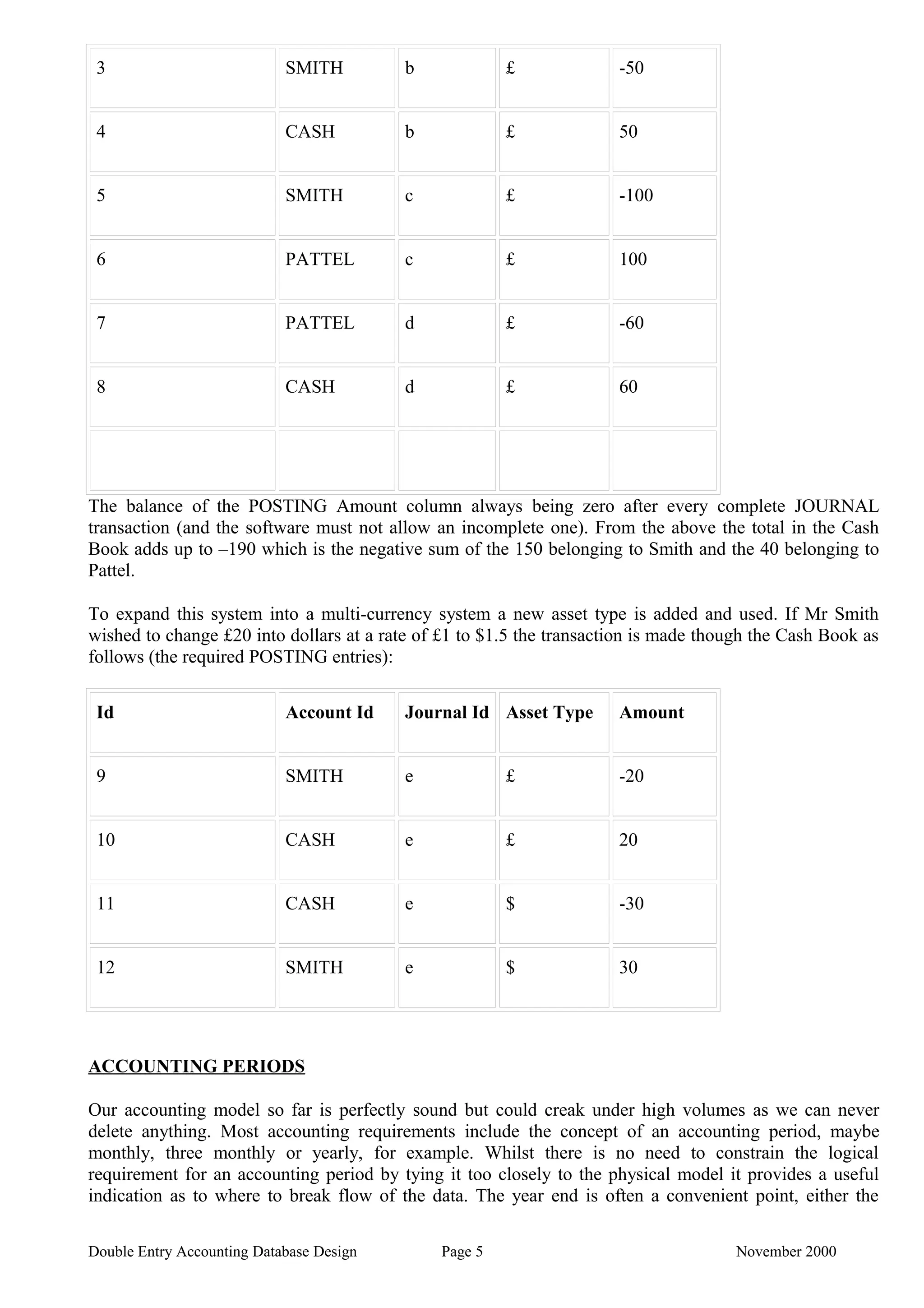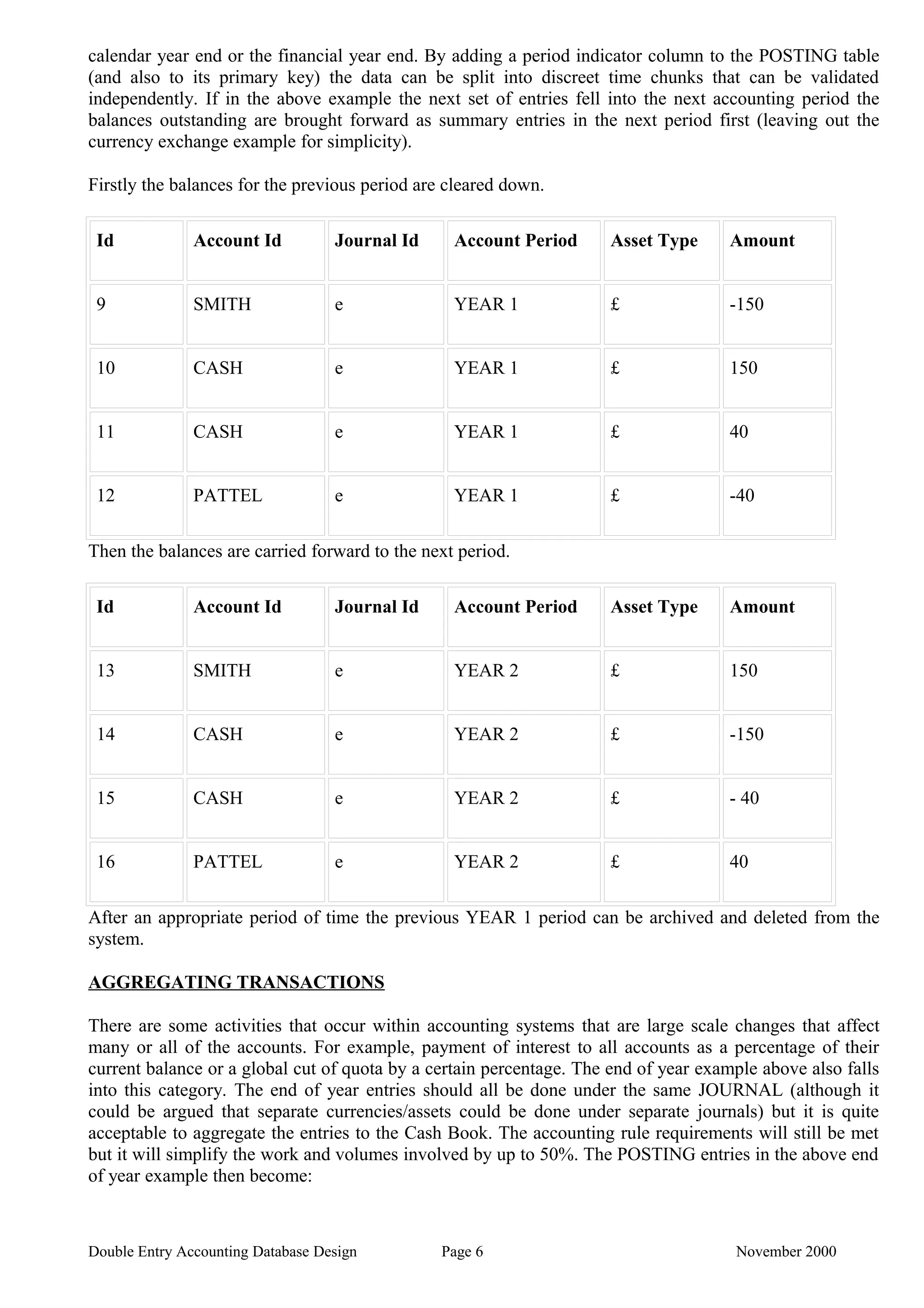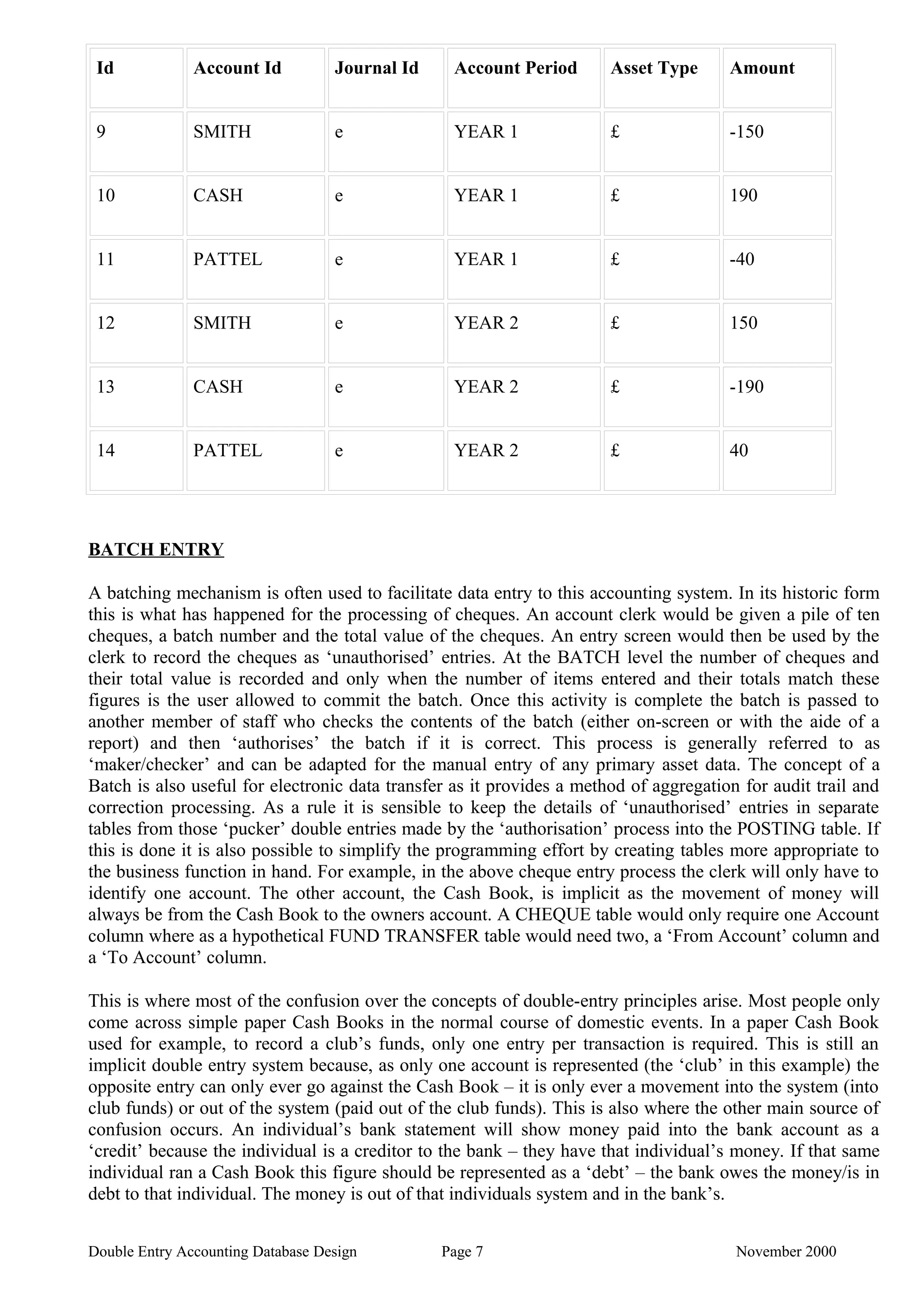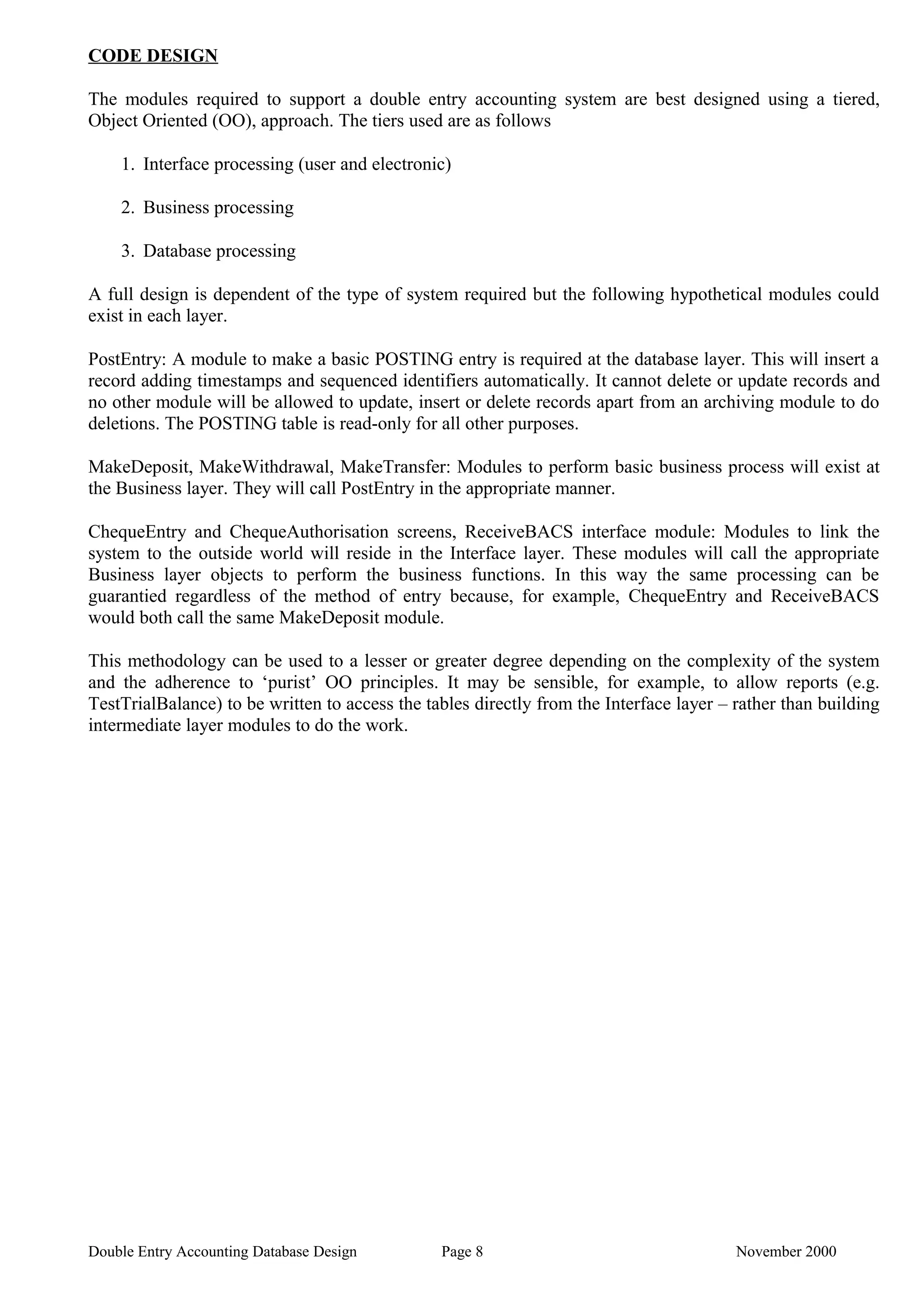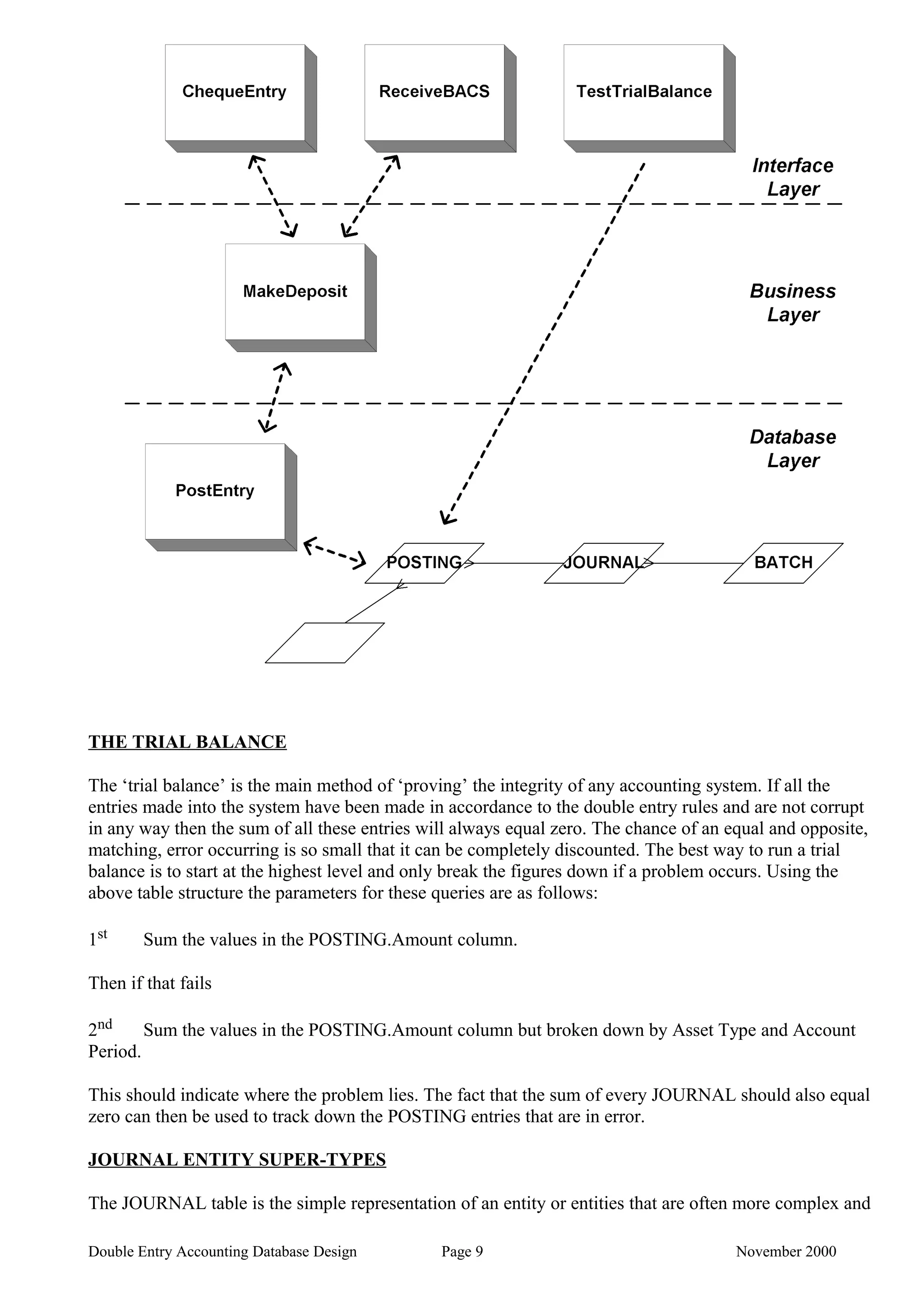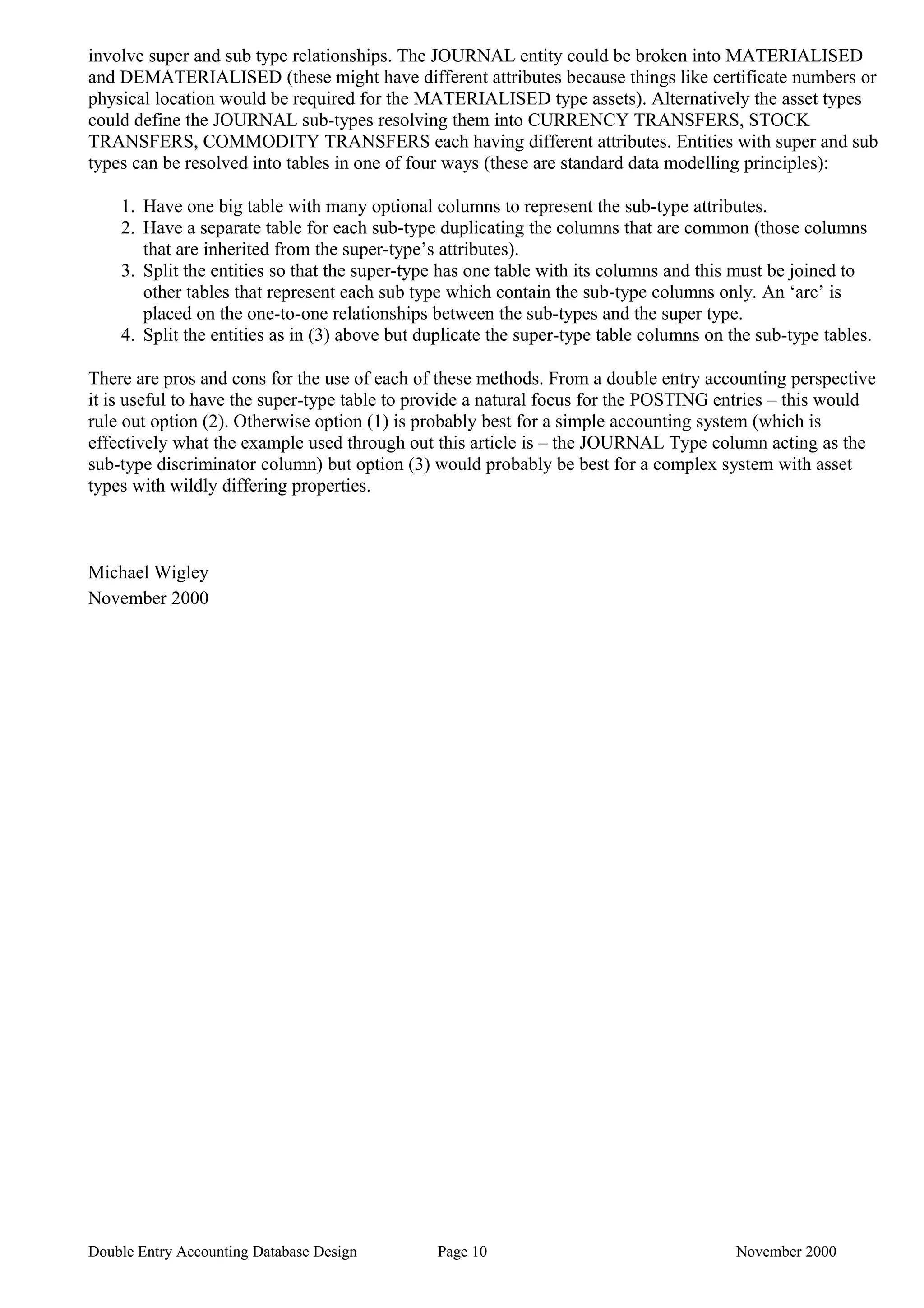1) A double entry accounting system in a relational database stores each financial value twice, as both a debit and a credit, to ensure accuracy. This provides a complete audit trail as values can never be changed or deleted.
2) A double entry system is recommended over a single entry system if the financial information will be audited, represents the sole record of ownership, involves high value assets, or the system is likely to expand.
3) An example shows a cash account balancing transfers between two other accounts, demonstrating how complex asset tracking can be built from simple double entry accounting principles.
